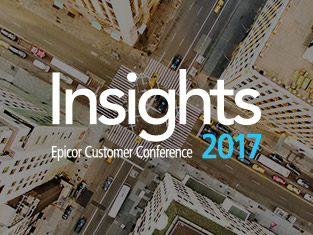The cost of a software budget
Software selection can be a lot like car shopping. You do a few test drives. You talk to happy drivers. You ask for the price and then ask for a better deal. You begin to investigate how much this new vehicle is going to cost. One part of the software budget is easy: that it’s going to cost you something. You might already have a quote from your prospective supplier. You might have more than one quote addressing different ways to acquire your new software or ERP system. But how can you predict the total cost of ownership?

Initial installation costs
One option for a new software or ERP system is an on-premises installation, complete with your own hardware to support the platform. In the past, this was the only option. A business would pay money at the beginning and obtain the software to install on a company-owned computer network. Ongoing costs would include financing the staff required to maintain support, manage future upgrades, and navigate bug fixes.
Many software acquisitions today use software as a service, or SaaS, as an option. This is commonly known as the cloud, but it is the most public of the multitudes of cloud-based solutions available to businesses. SaaS requires an agreement to pay a fee monthly for some years into the future. Software as a service usually involves low or no upfront cost since the profit for the vendor is based on long-term commitment to the software subscription. Salesforce is a common example of SaaS. Implementation costs are low to none, as the software and related data are loaded on a vendor-maintained system somewhere outside of your corporate walls. Initial costs vary for SaaS, but generally they’re the deal that opens the door for a more lucrative future for the vendor, rather than an early expenditure for the purchaser.
Project management costs
Acquiring and implementing enterprise-level software of any kind is a major project that can require several years to complete. One of the first considerations is that you’ll need someone to manage the overall project. Some companies will hire a specialist who has managed similar implementations successfully with the intention that the job will be limited to this one project. Others might choose to challenge an up-and-coming person already employed with the company to transition into a position of management of the ERP or software project. The intention here is often to develop that person’s skills and groom them for future promotions. There are other options, of course, but the bottomline is that managing your enterprise software project will cost money. Even using an already-employed person has a cost, as someone will need to be hired to perform that person’s job in the interim.
Most businesses will form a steering committee that will act as a board of directors over the project. The project manager and senior executives will fill this committee and help keep the project on track, leading to completion on a schedule that will most benefit the company.
Real costs will come from the defined implementation group. This group can be made from currently employed people, but all of them, while working on the project on a part-time or full-time basis, will need replacement personnel to fill previous roles. One or more software consultants from the software provider will have roles in this group, and all of them will cost money. Likely there will be specialist consultants required to fill roles and perform tasks when the business is in need of additional resources.
Data conversion costs
Extracting data from legacy systems and converting that data to the formats required by your new software is one of those specialist roles. Most of the cost will come early in the project, but some expenses will certainly be ongoing, as new needs and corrections are found during the testing of the new software.
The price of testing
Testing the new software to ensure all transactions and reports yield the results required actually work will be an ongoing cost throughout the project. Some tests will be completed and changes to processes or data will be made and then the test will be made again until the results are satisfactory. Set aside money and time for a testing phase. This is a critical step and should have substantial representation when you’re developing your software budget.
The savings found in training
Your users will need training so that they can work with the new software immediately. Whether you hire training specialists or develop your own training process, there will be an investment here that will result in a lot of savings and profitability for your company.
The budget for hardware and networks
Your new software has the most up-to-date technologies. Likely you will need upgrades to hardware and networks to enable those technologies. Your legacy hardware probably could use some upgrades anyway if your systems were bought years ago. To create an accurate budget for hardware and networks, add up all the incremental costs and make a time-phased list of those costs. You can now compare the costs in each time bucket against the benefits you expect in each time bucket.
Looking for help developing a software budget reflective of your company’s needs and capabilities?
Get a business process review today. Our experts can assist you with full-circle enterprise resource planning, managed ERP hosting, and managed technology. EstesGroup has helped manufacturers and distributors for more than 17 years, and we have specialists for everything from Epicor Kinetic to Prophet 21.

